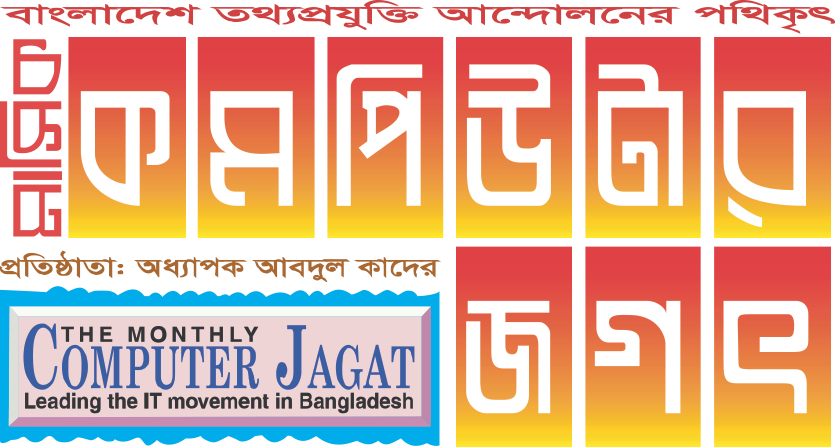হোম > Beyond 3G LTE is Heralding Fabulous Changes in the Cellular World
লেখক পরিচিতি
লেখকের নাম:
কজ
মোট লেখা:১০৪১
লেখা সম্পর্কিত
পাবলিশ:
২০০৮ - নভেম্বর
তথ্যসূত্র:
কমপিউটার জগৎ
লেখার ধরণ:
মোবাইল
তথ্যসূত্র:
ইংরেজি সেকশন
ভাষা:
বাংলা
স্বত্ত্ব:
কমপিউটার জগৎ
Beyond 3G LTE is Heralding Fabulous Changes in the Cellular World
Nowadays the buzz words third generation (3G) not only captures attention of the telecom gurus but also injects a new hope to the users to enhance their mobile experience. Countrys telecom watchdog BTRC (Bangladesh Telecommunication Regulatory Commission) is planning rigorously to issue 3G network operation license by the next year. Cell phone operators are now upgrading their network in order to unveil the long awaiting 3G operation.
But when we conceive the idea of 3G the world is thinking beyond 3G. As we are the citizens of a global village the wave of ideas beyond 3G can bring profound impact in the local cellular market. Until recently, worldwide 3G network deployment does not introduced any significant change in current trend of mobile communication.
Worlds largest network operators still offer their 3G service in the limited places in order to the viability of network operation. India, one of the fastest growing mobile markets after China still does not has any 3G operation.
In this crucial reality of 3G world another technological solution LTE (Long Term Evolution) came in limelight and offers extraordinary opportunity to the operators. LTE will be used for mobile, fixed and mobile wireless broadband access. The significance of LTE is its ability to increase capacity, to reduce network complexity and in this process it downsizes deployment and operational costs.
LTE is a complete all –IP (Internet Protocol) environment that incorporates Orthogonal Frequency Division Multiplexing (OFDM), a widely used modulation technique for Wi-Fi, WiMAX and DVB and DAB digital broadcasting technologies. The targets for LTE indicate bandwidth increases as high as 100 Mbps on the downlink and up to 50 Mbps on the uplink.
LTE also ensures greater spectral efficiency that in effect helps operators to accommodate more subscribers within their existing and future spectrum allocations, with a reduced cost per bit.
LTE can deliver optimum performance in a cell size of up to 5km. It is still capable of delivering effective performance in cell sizes of up to 5km radius, with more limited performance available in cell sizes up to 100km radius.
Another breakthrough of LTE is its ability to minimize round-trip time to 10ms or even less (compared with 40-50ms for HSPA). As a result, LTE will provide more interactive environment for the users and leave space for high-quality audio/videoconferencing and multiplayer gaming.
Interconnectivity issue between existing core network architecture to all-IP system as has been resolved by System Architecture Evolution (SAE)-now called Evolved Packet Core (EPC). SAE/EPC enables more flexible service provisioning plus simplified internetworking with fixed and non-3GPP mobile networks.
EPC is based on TCP/IP protocols and for such user will get the flavor of PC like environment from their mobile platform to accomplish data incentive activities such as rich multimedia content.
The networks must transmit data at a reduced cost per bit compared to 3G.; they must be able to offer more services at lower transmission cost with better user experience; LTE must have the flexibility to operate in a wide number of frequency bands; it should utilize open interfaces and offer a simplified architecture; and it must have reasonable power demands on mobile terminals. Some operators projected to deploy the first LTE networks in 2009.
The prime advantage of LTE is it allows operators to reduce operating expense. Generally operators are facing financial constrains to launch large scale 3G operation. LTE also promises high data throughput through the mobile network that in reality helps to develop more interactive services for the subscriber. Spectrum determination liberty is another exciting feature of LTE. Apart from multi frequency band operation, LTE also features scalable bandwidth. WCDMA/HSPA uses fixed 5 MHz channels, the amount of bandwidth in an LTE system can be scaled from 1.25 to 20 MHz. This means networks can be launched with small amount of spectrum, alongside existing services and adding more spectrum as users switch over. In essence, telecom experts predict that the LTE will add a new dimension to mobile industry in near future.
CJ Web
লেখাটি পিডিএফ ফর্মেটে ডাউনলোড করুন
পাঠকের মন্তব্য
২০০৮ - নভেম্বর সংখ্যার হাইলাইটস
অনুরূপ লেখা

